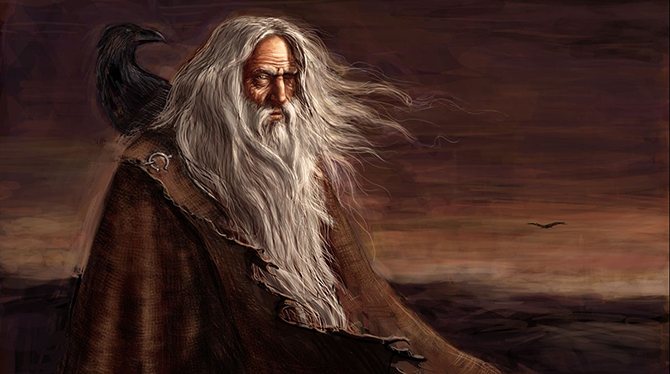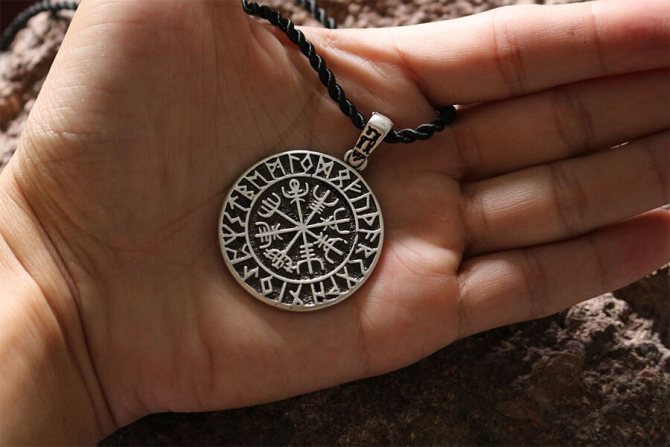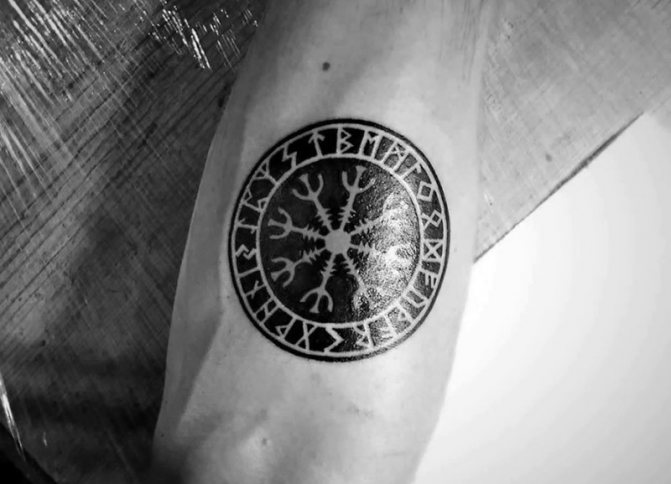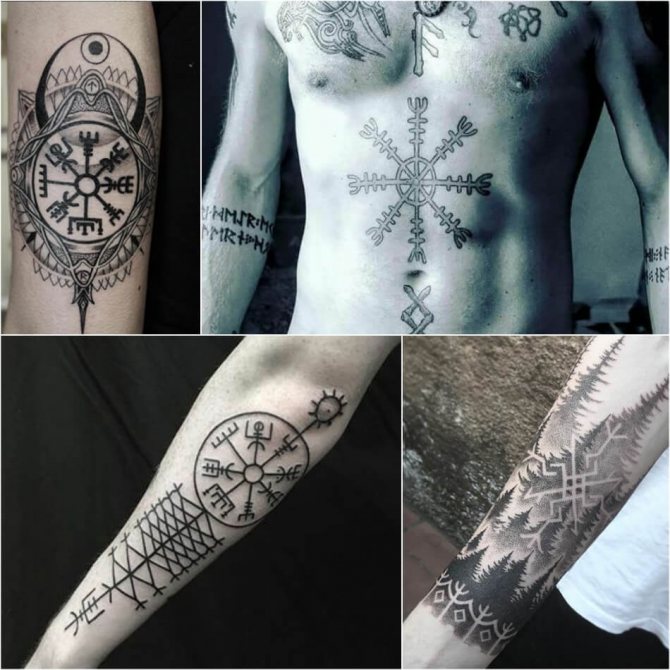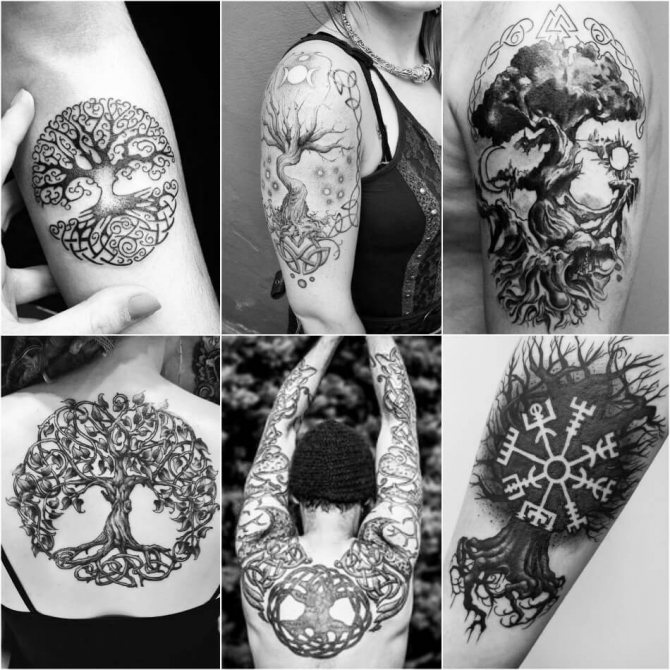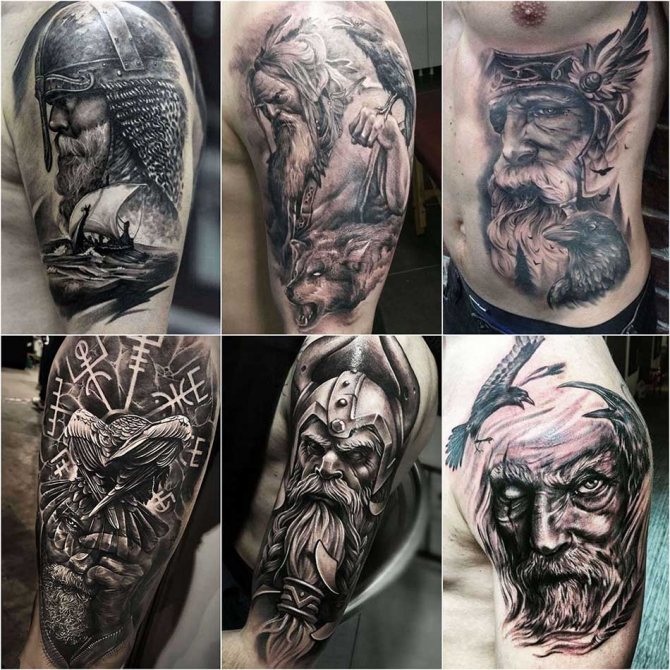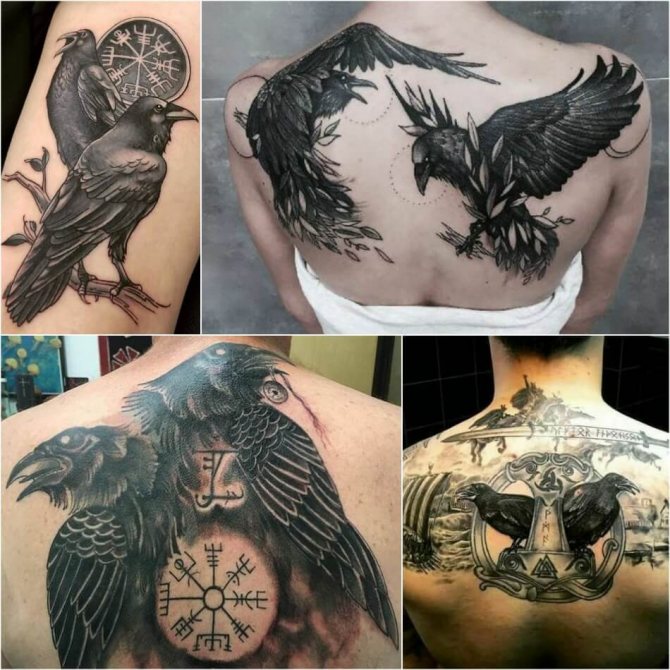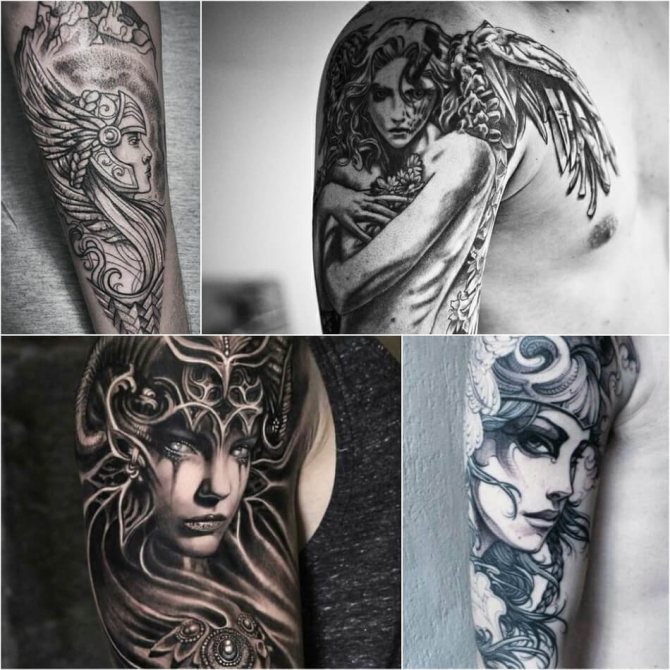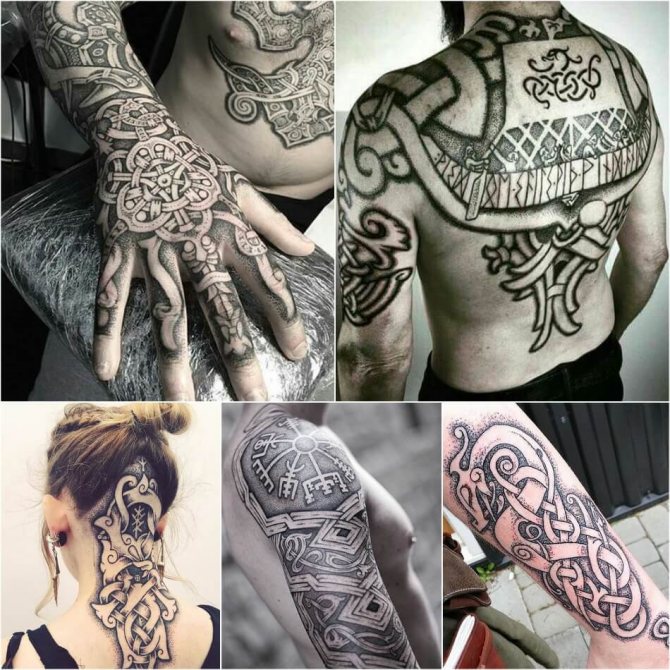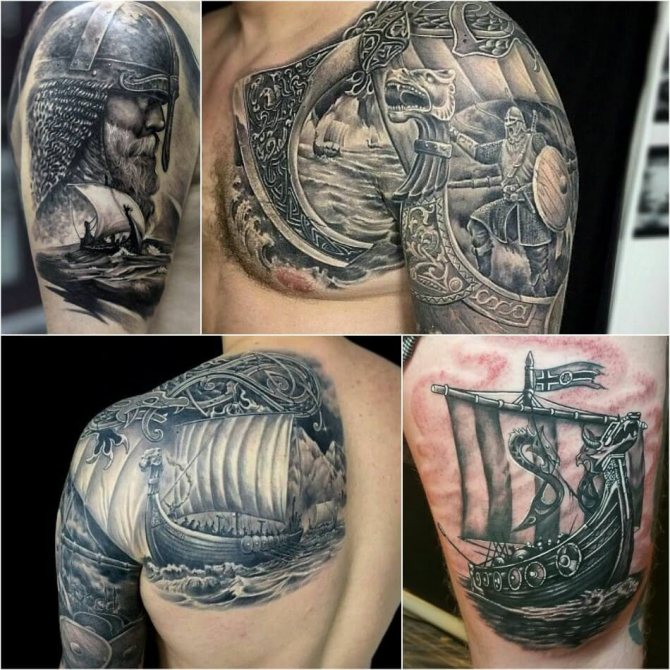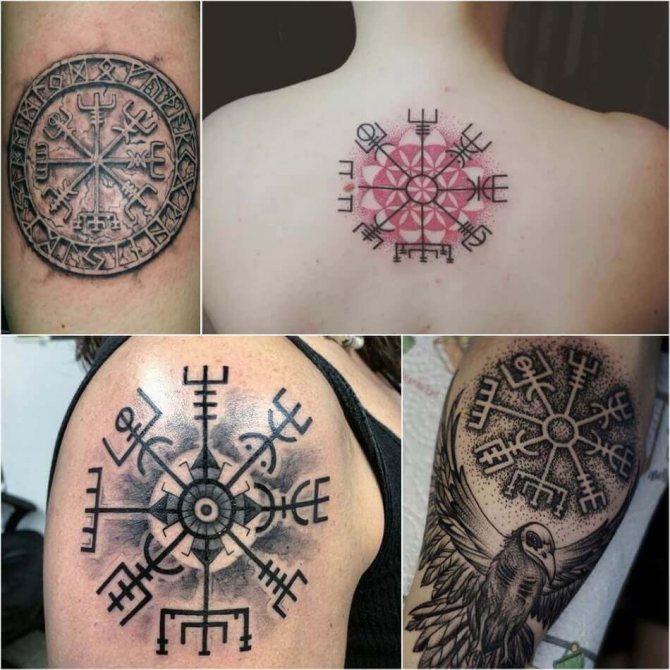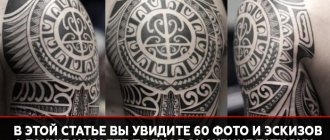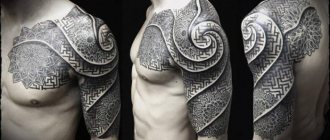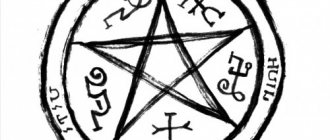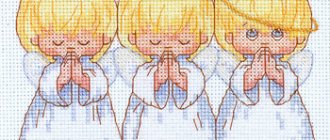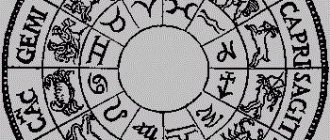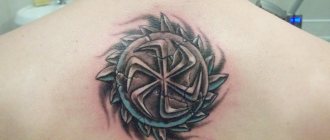The popularity of the Vikings these days is easy to explain. Mass culture portrays them as brave, desperate and warlike people. We are enticed by the mysticism of the runes, the romance of the ancient sagas, and the rhythmic lines of the Elder and Younger Eddas. Scandinavian symbols are inextricably linked to this layer of culture.
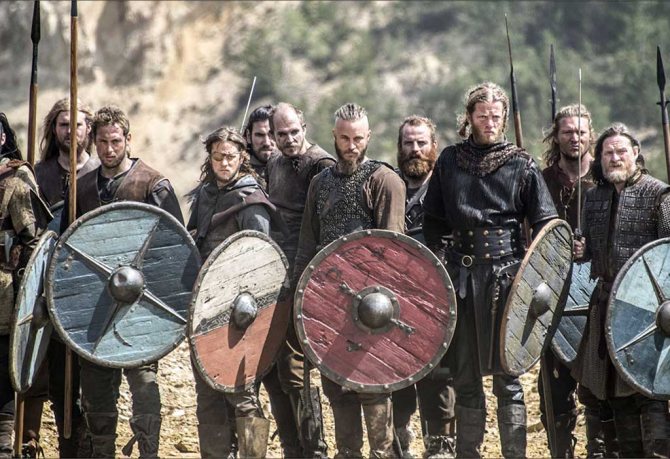
The Vikings series is a prime example of the depiction of Scandinavians in pop culture.
In this article we will reveal the meaning of ancient Nordic amulets, tattoos and symbols, as well as look at a modern symbol, the Scandinavian cross, with which the lives of modern Vikings are in one way or another connected.
At the same time we will try to dispel some misconceptions sown by mass culture and try to understand what the stern warriors were really like, what they believed in, what they worshipped. This will be interesting!
Worldview of the ancient Scandinavians
What does the average person know about the ancient Scandinavian tribes? They were Vikings, sailors and warriors. They believed in the Aesir gods who lived in Asgard, on top of the world tree Yggdrasil. Brave warriors who fell in battle, according to their belief, went to Valhalla and everyone else to Hel. In fact, this is not entirely true.
"Edda", where all this is taken from, reflect the beliefs of a single group of people in Scandinavia - the very Vikings - in the IX-XI centuries. However, the words "Scandinavian" and "Viking" are not synonymous. Scandinavians are all people living in Denmark, Sweden, Norway, and Iceland. In the Viking Age there were many common people among them who were by no means eager to fall in battle. Among the gods, they no longer worshipped the warlike Odin and Thor, but the peace-loving Freyr, for example. So the Scandinavian amulets are not only in the "Eddas" and sagas, a lot of interesting and, most importantly, reliable, information can be learned from the ethnographers.
The word "Viking" in fact it meant the same thing as "pirate" or "robber.
Most of the Vikings were still Scandinavians, but there were representatives of other Baltic peoples among them as well:
- The Vends, or Western Slavs;
- Couronians, ancestors of Lithuanians and Latvians;
- Esti and other Finnish tribes.
The common farmers, as well as the feudal rulers, treated the Vikings with little warmth. Often they assembled militias or hired some Vikings to massacre others. It is worth recalling the same "invocation of the Vikings" from the history of Rus'.
The Vikings could even be sent to the scaffold for jewelry, because these people were essentially considered pirates, and doing business with them was also regarded as a crime in many places.
The common Scandinavians and other Germanic tribes had a worldview similar to that of the Slavs or Celts. These people believed that the world was created from the body of the giant Ymir, and therefore animate. They offered sacrifices to good spirits and the gods to protect them from evil forces (trolls) and feared black magic, machinations of the dark forces, from which the protection of runami or averters.
Valknut .
This magical symbolism of the Scandinavians is one of the few that have reached us without major changes. Drawing of the amulet is a three intertwined triangles. One of these figures represents the gods, the second represents wisdom, wit and power, and the third represents spirit, body and feelings.
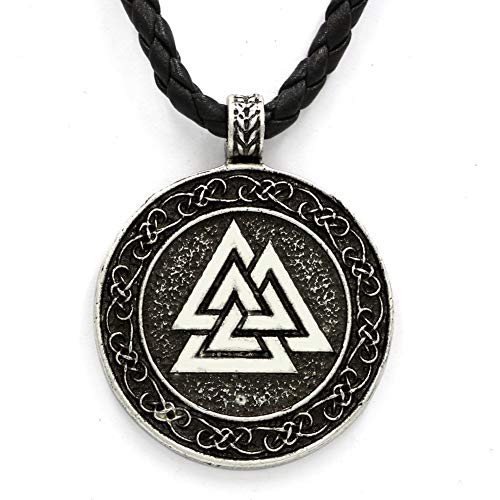

The Valknut talisman was associated by the Vikings with the god Odin, the patron saint of fallen warriors. It is not uncommon for such a drawing to be applied to armor in order to ensure success in battles. In addition, the talisman was considered an attribute of power and authority.
The most important thing is that it is a symbol of the power and authority of a person. The main condition for its positive influence is the owner's sincere belief in the exclusivity of the talisman.
The general concept of symbols and runes of the Scandinavians
God One on the World Tree.
According to the Eddas, the god Odin received the knowledge of the runes after nine days crucified on the world tree Yggdrasil. Esotericists believed that the runes are more than twenty thousand years old. Modern scientists have a more modest opinion. On the basis of archaeological data it is believed that the runic writing comes from one of the variations of the Etruscan alphabet.
These people, who lived in Italy before the rise of Rome, were known for their wisdom. The Etruscans also controlled the amber trade along the so-called Amber Route from the Baltic to the Adriatic Sea. The Germanic barbarians learned a lot from their civilized neighbors, including writing. Anyway, the runes are still very ancient and powerful signs of the Vikings, according to the most conservative calculations they are more than 2000 years old.
Each rune has its own meaning. Scandinavian amulets based on runes look quite different depending on the purpose for which they are made. The meaning of the symbols changed even because of the order in which the signs that make them up were drawn.
With the help of runes and their combinations was possible to learn the future, to achieve happiness in his personal life, invincibility in battle. Various combinations of these symbols were used even when the Scandinavians long ago converted to Christianity.
But Scandinavian jewelry did not consist only of runes. The same is true for the Germanic peoples - the more simple talismans were also known among the Slavs, the Celts, and the Romans. The symbols were also used as talismans, carved on wood or made of silver.
Thor's Hammer
Thor's hammer is known from legends and scriptures. With his weapon the god not only defeated his enemies, but could resurrect animals and make the land fertile. Thor could bless marriages and protect the poor, the destitute.
Vikings decorated their drakkars with the image of Thor's hammer. They sincerely believed that he would help to return home faster. This weapon of the god was commonly worn around the neck in the form of a pendant. It was also carved on shields and wooden sword handles. This Scandinavian amulet is a source of courage and strength.
Scandinavian runes and their meanings


The most recognizable Scandinavian signs are, of course, the runes. You can use them, in general, for any purpose. Most often they are used for:
- protection of your home from theft and evil spirits;
- success in difficult undertakings;
- health and youth prolongation;
- protection on the road;
- to obtain wealth and power.
Runes can be carved or drawn on any item of clothing, except those used for "dirty" purposes: feeding animals or the satisfaction of natural needs. The best known way to apply the symbols is with runescript - you simply draw the signs you want in a certain order. Signs that mutually reinforce each other can be combined into a runic Scandinavian ligature.
Before making an amulet, you need to study the special literature. In the art of erylei (as they called the connoisseurs of the runes) is a lot of nuances. If you don't take them all into consideration, you will get at best just a decoration. At worst, you will end up with a cursed item that will bring bad luck.
Trefot .
It is believed that this Scandinavian amulet carries the power of three natural elements at once, combining water, air and fire energy. What is its main meaning? Sign Trefot or Triskelion, helps to save against floods and fires. It is also able to protect his master and against theft. Interestingly, the sign can be found in the culture of different peoples, who are nothing similar to each other in their faith and religious beliefs. Scientists believe that this sign first appeared in Greece. Later it was borrowed by other peoples, making Triskelion a part of their culture.
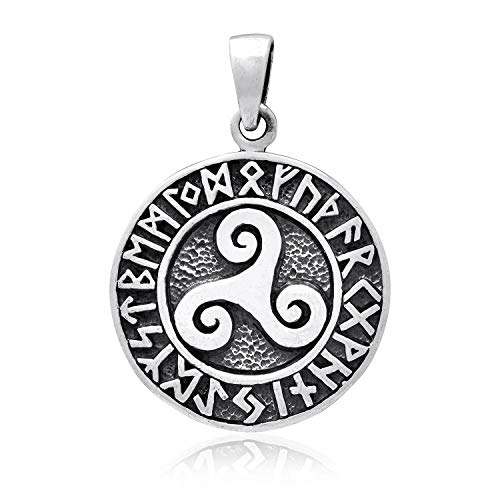

It is believed that this sign is a symbol of the transience of life. The number three, which is depicted in its image, also has a special meaning. In Christianity, it symbolizes the triune nature of God.
The Triskelion, which bears the image of the three elements, allows man to find harmony, to feel his unity with nature, and to develop intuition. This sign gives its owner the energy of life.
Symmetry of the sign represents wisdom and self-sufficiency. It prevents trouble and allows a person to improve spiritually and physically. This is the main purpose of this symbolism. The talisman will ensure its owner career growth and provide an opportunity to survive the most difficult moments of life.
Top of the most famous Scandinavian amulets
A person who is interested in Scandinavian symbols and their meaning should remember a few important things.
- Not all well-known symbols have the same lettering and meaning as they did in ancient times. This should not embarrass you: traditional magic, contrary to popular belief, is constantly changing. It implies creativity within the ancient system, not blindly copying it.
- Not all Viking amulets come from Scandinavia. In one grave of a warrior of that era, scholars even found a statue of Buddha, and in another, a Muslim "hand of Fatima. What to say about the nations closer to the Scandinavians - continental Germans, Celts, Slavs. The same amulet could be "Thor's hammer" for a Scandinavian, and "Perun's axe" for a Slav.
- Scandinavian amulets are very strong and have a powerful, militant energy. Work with them requires careful observance of magical rules, as well as serious mystical experience.
What amulets are primarily associated with Scandinavian culture?
Thor's Hammer
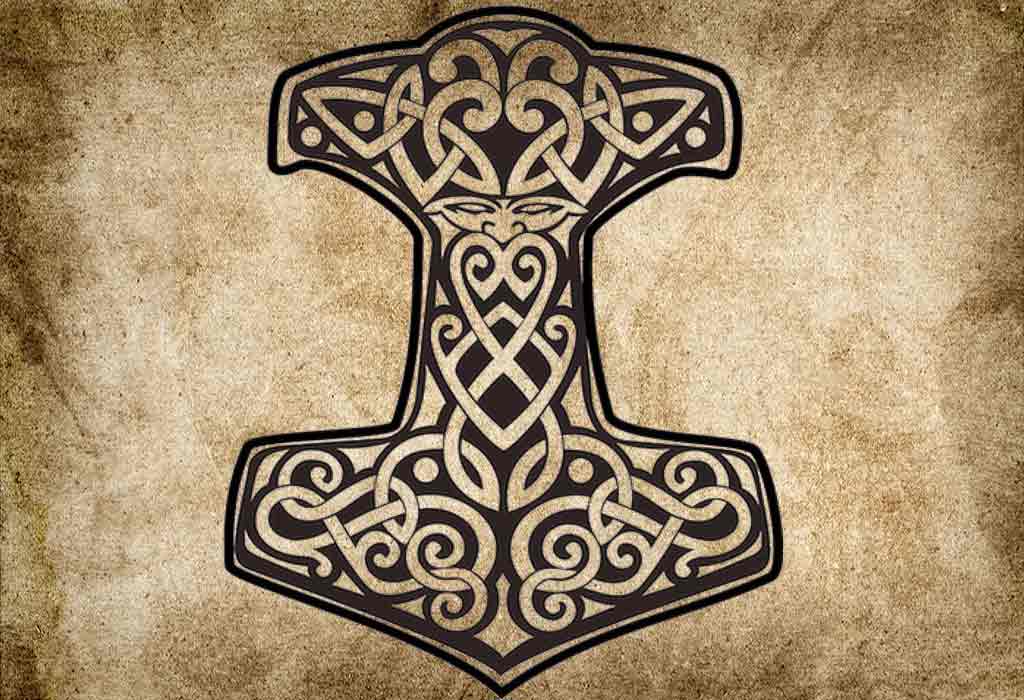

Perhaps the most recognizable and well-known amulet of the Vikings. Outwardly resembling an anchor. It symbolizes courage, valor, and protection. Will suit men, especially those who by virtue of their profession need courage, will to win, "an internal core. This, for example, athletes, soldiers and officers, rescue workers, firefighters, law enforcement officers, doctors and surgeons.
Thor - benevolent god, protector of common people from demons - trolls, snakes, giants. Scandinavians attributed to their influence many misfortunes of peasant life: natural disasters, drought, diseases of livestock and crops. Therefore it was believed that Thor's hammer, fighting the forces of evil without a miss, scares away all such plagues. In the same way, the god of thunder contributed to the fertility (although here he was often replaced by Freyr).
On the amulet, you can additionally place symbols of Thor, runes Turisaz or Teivaz. They will additionally strengthen the talisman. Ideal materials - silver, iron, copper. Do not draw snakes or dragons on the hammer - they will weaken the energy of the symbol.
The tree of life
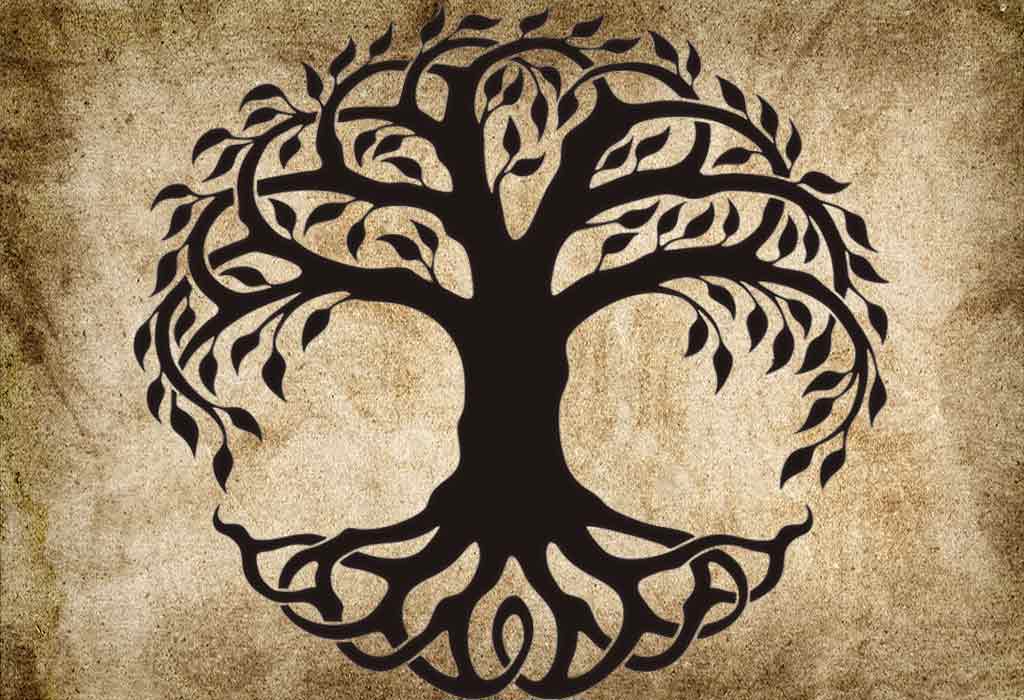

Perhaps the most universal image, known to all peoples around the world. The Scandinavians called the world tree "Yggdrasil", the continental Germans "Irminsul". It means "the horse of Odin," because the supreme god of Asgard as if "saddled" it when he crucified himself on it.
By the way, it is fundamentally wrong to think that the myth of the World Tree is just a product of ignorance. It is unlikely that anyone in his right mind would think that he lives on a tree. In fact, the Tree is more of a poetic metaphor and at the same time a symbol of the spiritual world order. It connects nine worlds, including our own, the human one. A shaman or a god can wander through it, spiritually visiting different worlds.
Accordingly, the Tree of Life represents, in fact, life, wisdom and providence. It is also a symbol of the universal law that binds all living things. It is a powerful amulet.
Helmet of Terror
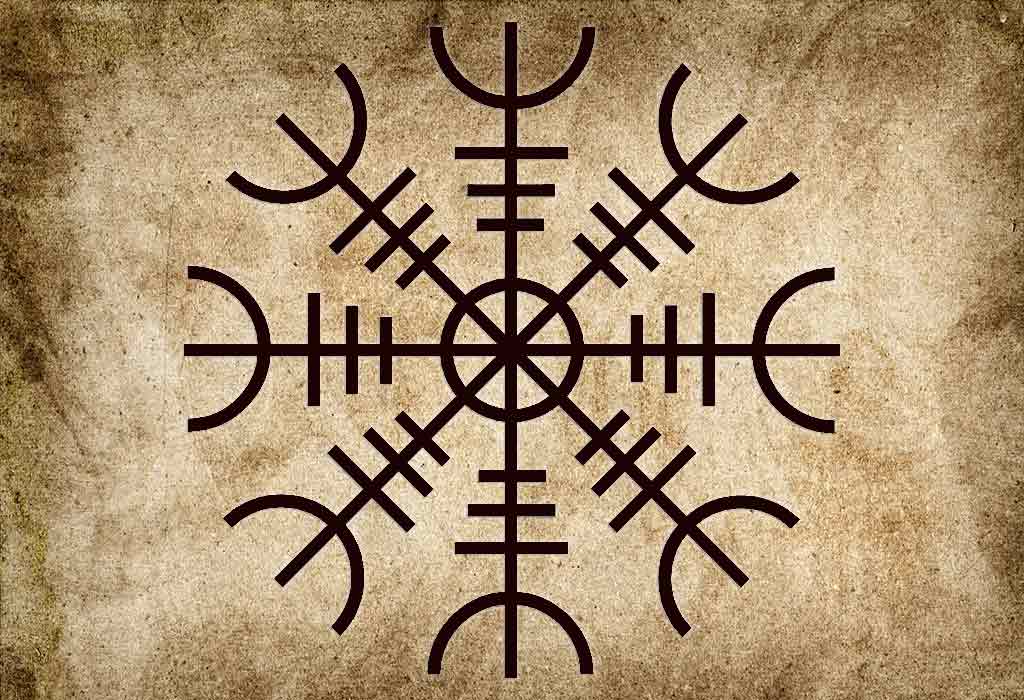

The Helmet of Terror, or, in Icelandic, Agishjalm, is a galdrastav, that is, a circum-runic symbol. Such signs are not unique to Scandinavia; they are known throughout northern Europe. On the shores of the White Sea, for example, similar pictograms were used by artels of fishermen until the twentieth century. Agisjalm is mentioned in the sources as a powerful warrior's amulet.
It was attributed the ability to weaken the enemy, to inspire fear and weakness. It was applied to the body, weapons, and armor. When the Viking Age came to an end, it was used to ward off evil spirits and thieves. By the way, the already mentioned fishermen of the Russian North put a semblance of a guildrastav on their boats precisely as both a signature and protection against theft.
For a modern person it would mean the same thing as for a peaceful Scandinavian peasant. But caution should be exercised - the galdrastaves are very powerful; they can take away the power of an unworthy person.
The symbol of the Valknut.


Modern esotericists link this sign with the god Odin and considered one of the symbols of Yggdrasil (a valcnut has nine corners, as nine worlds connected by a tree). The name of the sign is translated as "the knot of the fallen". It is possible that this is what is meant by the name "Heart of Hrungnir" in the "Younger Edda".
The problem is that there is no clear description of what this symbol should look like at all. In the form in which it is now known, the valcnut has been around for a very long time, as far back as the Roman era among the continental Germanic tribes. That said, the archaeological finds are silent, for they are not signed by anyone.
To use this sign, as well as any other unconfirmed sources, should be at your own risk. If you do decide to do so, the symbol's meaning is about the same as that of the Tree of Life - wisdom, discernment, law and order.
Black Sun
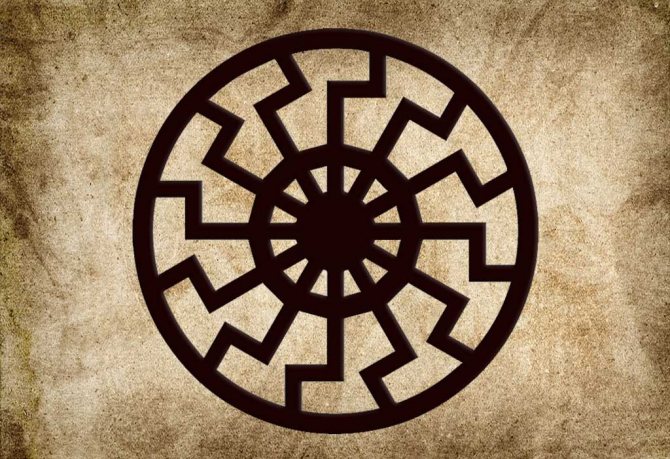

A very dubious mark. It is often associated with the Scandinavians and Germans in general, but there are almost no examples of its use in archaeological finds. Now scholars are inclined to believe that it is a little-known Roman symbol of the Sun, which sometimes fell into the hands of the Germanic tribes in trade or raids.
The fact that this symbol was often used by the SS troops does not give the sign any more moral purity in our eyes. The Nazis took it not from historical literature, but from the works of 19th century occultists, who believed that it signified wisdom, secret knowledge and magical abilities.
Historical analogues of the Black Sun are known from the Germans and Slavs, but they looked a little different (not with bent, but with straight or rounded lines).
Serpent ring Ouroboros
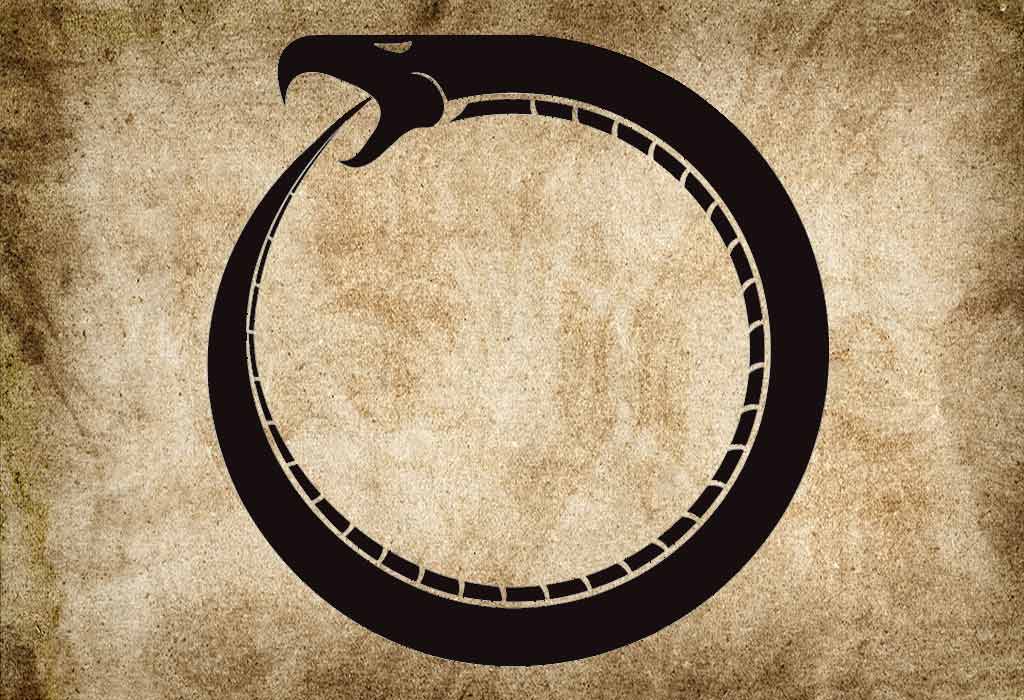

Another "gift" to the Germanic peoples from the Celts. Means the cycle of things in the world and within the human soul. The amulet gives the wearer intuition, prudence, sanity.
Also, the snake is considered a symbol of wisdom and magic. Therefore, this amulet is especially helpful to people who are just starting their journey in esotericism. He will help them find the right mentor, give them confidence and insight.
Celtic knots
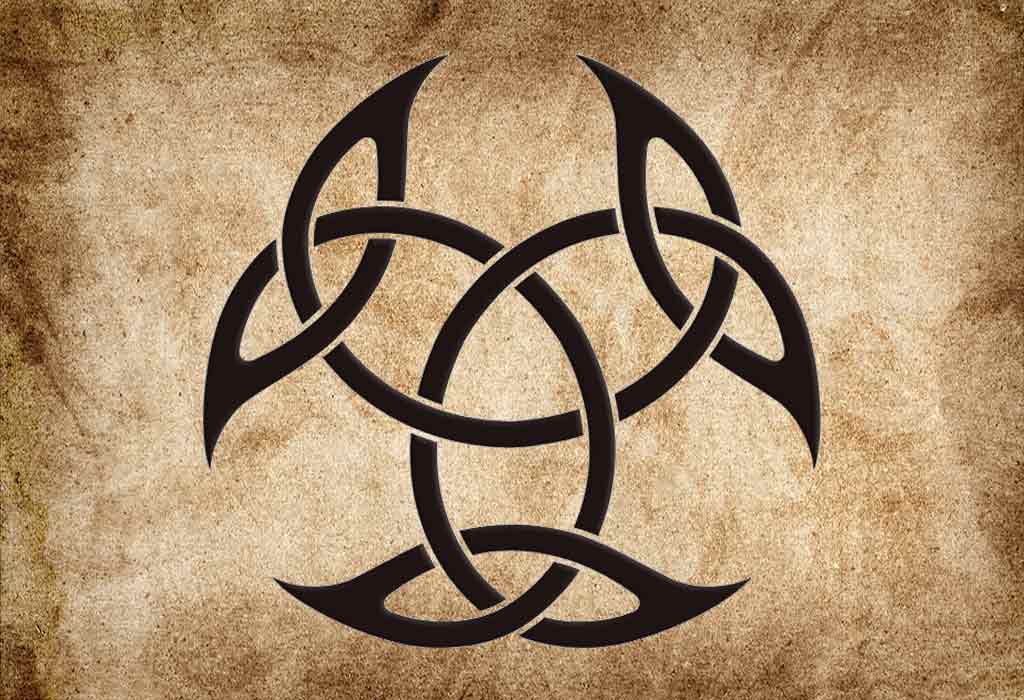

Up until Caesar's conquest of Gaul in the middle of the first century B.C., the Celts were more powerful and advanced than the Germans. Not surprisingly, first the continental Saxons, Allemans and Bavarians, and after them the Scandinavians began to use Celtic magic, which had outlived its creators, the Druids of Gaul, by more than a thousand years. The Vikings knit protection knots very eagerly, and also depicted them on their weapons, houses and tools.
Particularly popular with peaceful people were the so-called Luga knots, which ensured fertility and a good harvest. For a marriage to be strong, they used love knots. The Vikings also used the guardian knot "Guardian", which is a fairly accurate depiction of a dog. He was known in Slavic countries, where he symbolized the protection of prosperity and fertility.
Sun Wheel
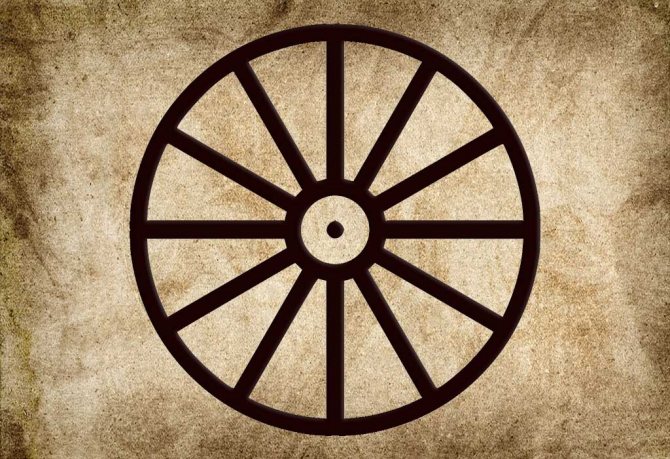

As with other peoples of the world, the Scandinavian wheel symbolized the sun. Carved images of the sun were used to decorate homes and kitchen utensils. This talisman meant wealth, success, prosperity.
Also, a solar amulet was a powerful protection against evil forces. As the first rays of dawn drive away the night, and miniature "sun" on the chest takes away from the bearer of the evil force and black magic.
Loki amulet
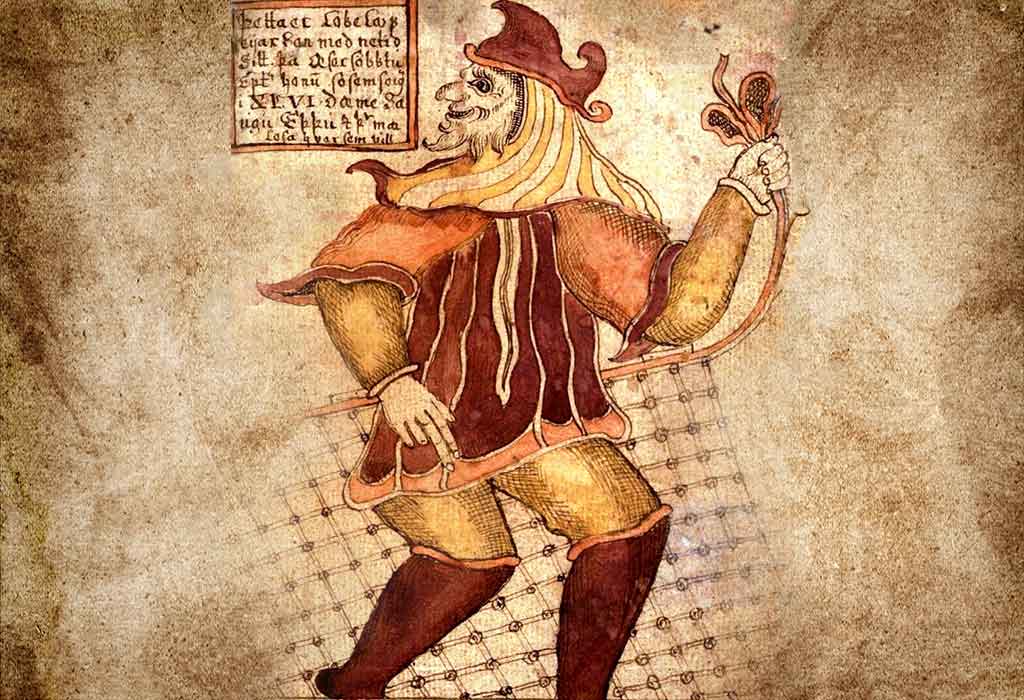

Loki amulet symbolizes cunning, resourcefulness, luck, and a sense of humor. This god was not so much evil as a joker and a lover of practical jokes. Rather, it was the story that he would lead the armies of darkness during Ragnarök, the end of the world, that brought the deity notoriety. However, it is believed that it was inserted into the Eddas by Christian monks to weaken the cult of Loki.
Loki's talisman is very different in appearance and style from other Germanic amulets. If a person wants to find a mate, he should make a symbol of the mischievous god and wear it for about a month, and then take it off for a while. The amulet should not be worn daily.
Double Axe
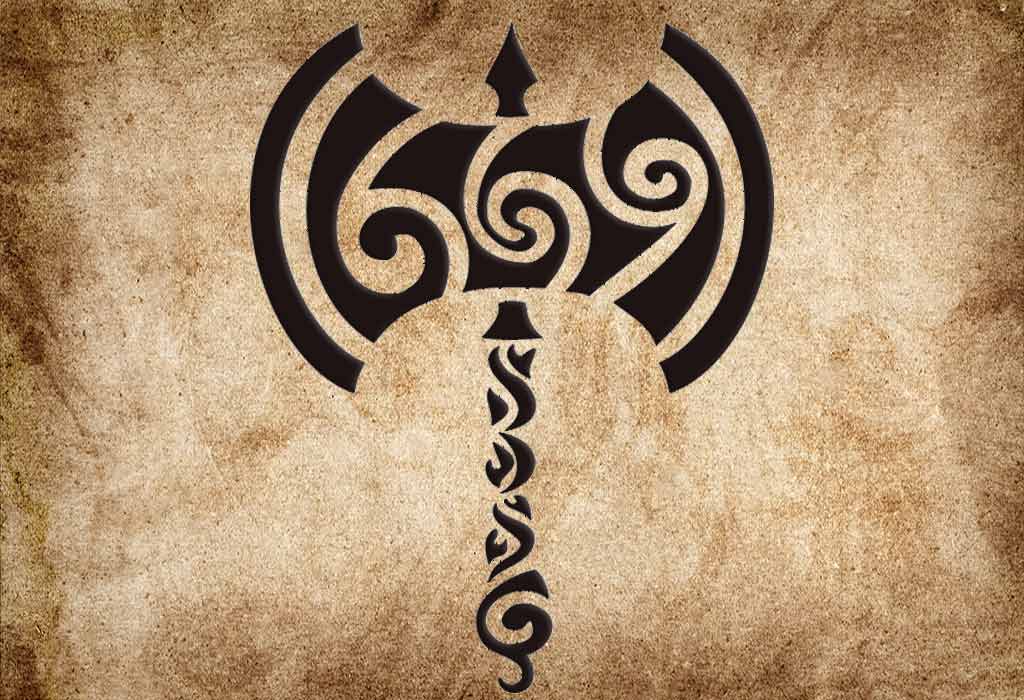

Also a non-Germanic symbol in origin. This time, for a change, he came to Scandinavia not from the Celts, but from the Romans. It also came to them from the Greeks, and to the Greeks from the ancient priestesses of Crete. There this symbol was called the labris.
It means the union of the masculine and feminine, integrity and completeness. As such, it is a symbol of justice and fairness. This talisman is also suitable for those in positions of power, to help them resist the temptations of power, and to remain worthy of their position.
Trefot .
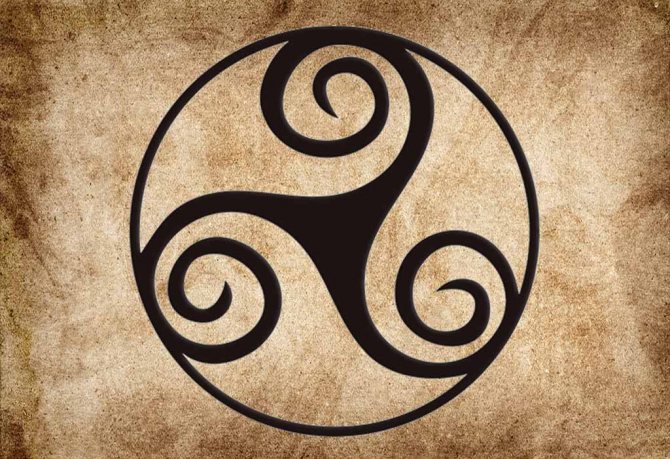

Trefot, or Triskelion, as the Celts said, means a combination of the elements of earth, water and air. Perhaps one of the most famous European symbols - it is found everywhere from Spain to the Urals, only the names and variations change.
This amulet will turn away trouble, give confidence in their abilities. It will help to find calm and balance, which is so important in our hectic world. An excellent choice for both men and women.
The wolf cross
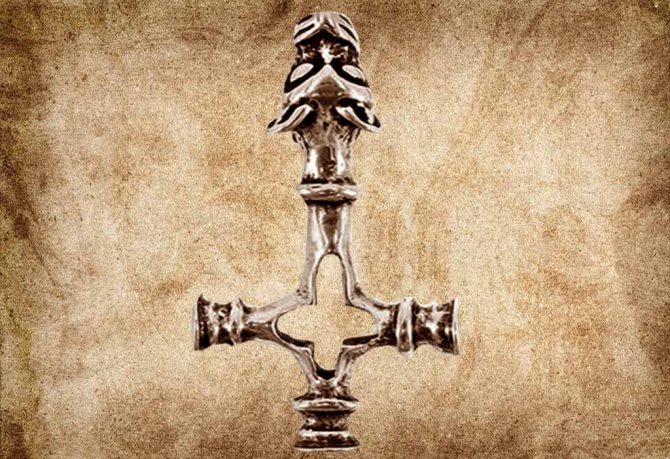

The wolf was revered as the totem animal of the mightiest warriors. But the talismans wolf's fang or wolf's cross will not suit everyone. Weak in spirit will be suppressed and enslaved by their powerful energy.
If you are confident that you can handle it, then the amulet will be your reliable protection. Especially well he will help people who travel a lot, such as sailors or truckers. Thanks to him, you will always come back unharmed.
It is believed that from the wolf symbol came and modern Scandinavian cross, a symbol that is firmly embedded in Scandinavian culture.
Making it with your own hands
Self-made amulets using signs, runes or symbols of Scandinavian origin, is not difficult. But it will be necessary to follow certain rules.
Preparation of materials
Averters can be made of any natural materials:
- wood;
- metals;
- leather;;
- fabric;
- glass.
If the symbol is applied to any surface, it is done either in ink or cut out. Embroidery is also used.
As the powers of all elements are attracted during activation of amulets, it is necessary to prepare in advance the following materials:
- Earth - rock salt of coarse grinding.
- Fire - a yellow or white wax candle.
- Water - spring or melted water.
- Air - aromatic sticks (incense).
Choosing a date for making
The best time for making amulets is a new moon or the first days of a rising moon. In some cases, you can create a charm in the full moon. Prepare better in advance, so that during the manufacture there was no hurry.
For making and activation of men's amulets, favorable days are Wednesday, Thursday and Saturday. The actions are performed in the daylight. The actions are carried out in daylight.
Family amulets must be made at night on Tuesday or Wednesday. Patronage is requested from Bragi.
Peculiarities of amulet activation
To activate an amulet on your own, a simple ritual will be required. Only in this way the amulet with ancient symbols will gain power, will be charged with energy:
- Prepared in advance objects are laid out in the center of an improvised altar (table, large boulder in the street).
- In turn, each of the elements is summoned, and a candle and an aromatic wand must be lit.
- At the same time, it is necessary to say a recitation. It can be improvised or with words like "I conjure in the name of Odin, with the power of runes, with speeches of the Great".
- The charm should be made in the form of an amulet with the power of the Rune and the words of the Great.
- You must hold the amulet for 1-2 minutes over the symbols of each element, then return it to the center of the altar, wait for the candle to go out.
If you want to have a magic potion, you must hold it for 1-2 minutes over the symbols of each element, then return it to the center of the altar, and wait for the candle to go out. Only in this way will be able to influence their own destiny, improve the quality of life, to protect themselves and their loved ones from trouble and adversity. But you should avoid "destructive" symbols, because they can not only ruin a person's energy, but also develop negative aspects of the personality.
Scandinavian cross: a modern symbol
You might think that the cross means Christian faith, but this is not always the case. The Scandinavian cross is a traditional symbol, derived from the "wolf cross" of the Vikings. It is present on the flags of all Scandinavian states, as well as Finland and several Northern European provinces. The sign symbolizes not only adherence to Christianity, but also staying true to the old traditions.
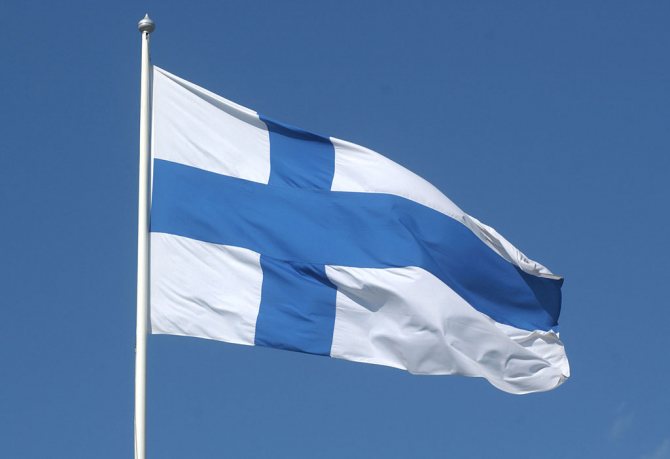

The flag of Finland. The Scandinavian cross is also emblazoned on the flags of Denmark, Sweden, Norway and Iceland.
We can say that the Nordic cross is a modern symbol of the Vikings. Of course, those times are long gone, but the descendants of brave pirates and sailors still live in their countries. They love and honor tradition, and recently many are returning to the beliefs of their ancestors. Perhaps we will still hear about new glorious deeds of these amazing peoples, but for now we can just use their strongest magical heritage.
Black Sun
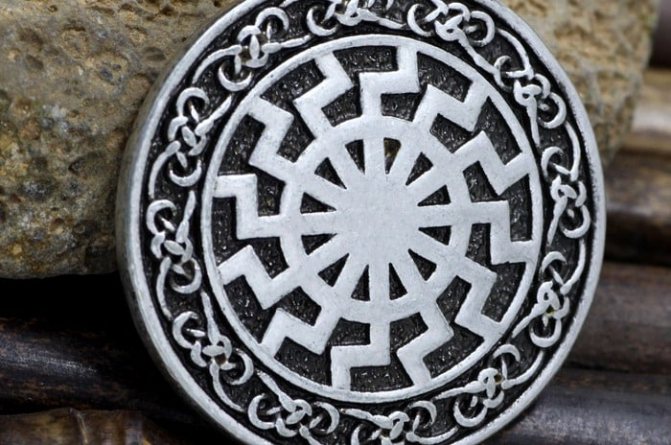

Beliefs mention that the gods gave it to humans as protection and support. The symbol helped ancient peoples survive times of crop failure, defeat enemies, and protect their homes. In Slavic culture, the black sun symbolizes an unbreakable bond with ancestors. The spirits of deceased ancestors were turned to for advice in difficult situations.
Viking tattoos and their meaning today
Contrary to the stereotype, it is unknown whether the Vikings wore tattoos. Some sources mention "symbols" on the warriors' skin, but it is unclear whether these were really tattoos or temporary patterns for some purpose. Like many ancient warriors, Scandinavians painted their bodies and faces before battle. But if you want your Scandinavian amulets to be with you always - why not?
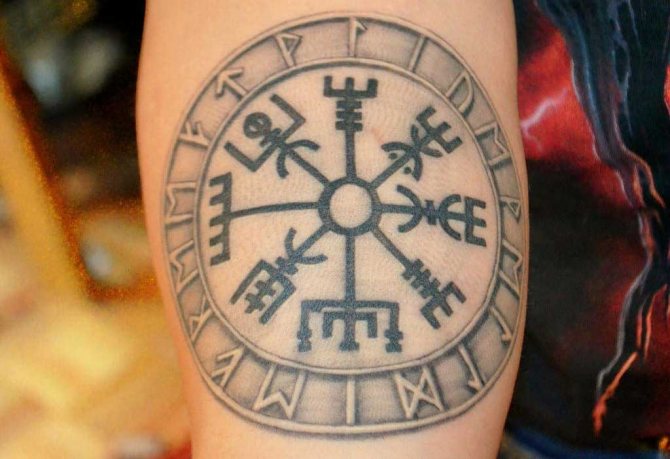

A tattoo with a Scandinavian runic compass will help you choose the right course in life.
People trying to practice Scandinavian paganism now - so called asatru - tattoos are common. These are usually either runic symbols, images of the gods, or quotes from the Eddas, which the person has chosen as his or her life credo. Also common are:
- An image of Odin, giving the wearer wisdom. Various attributes of this god are also applied, such as the eight-legged stallion Sleipnir or the crows Huginn and Muninn.
- Images of Frigg or Freya, designed to help in family matters.
- Wolves and sea monsters symbolizing unbridled power.
- Runic compass to help find goals in life.
- Protective signs and symbols not related to runes, but known in Scandinavian culture.
When applying tattoos, you should remember that an image that is unsuitable for you in nature can be harmful. You should also remember that Scandinavian symbols are largely pagan religious signs. How compatible are they with your religion? To a Christian or Muslim believer, for example, pagan symbols are more likely to harm than help.
If there is no problem with this, then feel free to choose your symbol and let it help you in life's journey.
To summarize
- The most popular Scandinavian symbols are the Helmet of Terror (the choice of strong personalities and warriors), Thor's Hammer (gives strength), Valknut (source of wisdom and knowledge), Black Sun (protection from various problems).
- Also the Scandinavians had runes which were used both as an alphabet and to communicate with the gods. A certain combination of these signs could attract wealth, love, strength, and protection to a person.
- How to wear such talismans? You can order/buy a pendant, make a tattoo. The only thing: Scandinavian symbols are pagan, so they will not suit believing Muslims or Christians.
By the way! Although our Rusic ancestors respected the Scandinavian amulets (and that's why we also treat them with such reverence), they had their own, Slavic symbols.. This video will tell you about the most popular ones:
